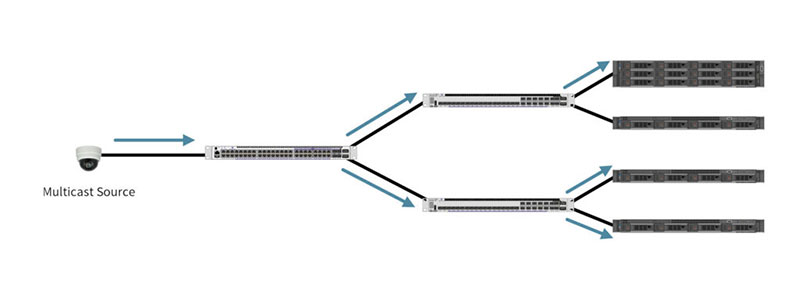When looking to deploy an IP video surveillance optimized network, one of the critical aspects of the infrastructure to consider is a unicast or multicast-capable network. Unicast and multicast networks each have their use cases within the video surveillance industry and should be understood and considered when deploying a network.

Unicast networking is straightforward and simple. For example, if a user would like to access a live feed of a video, the camera feed is sent over the network to the user to view the video. The same principle can apply to
An example scenario could be if an incident occurs on a large corporate campus. Multiple users will likely need to access various the same camera view or video files. Since many users are trying to access that data, the network switches will have to create and send that data out separately. This kind of traffic can quickly bog down a network and potentially lead to a device failure.

Multicast, on the other hand, and potentially improves the accessibility of data for a range of designated users on the network. This provides a significant increase in performance, as the network doesn’t slow down because of multiple copies of data traveling on it at once. This allows for clearer video, faster delivery of video, and overall, a more reliable and straightforward network.
Unicast often lends itself exceptionally well in smaller scale deployments due to its ease of integration. It works well in networks where there are lower to mid-range megapixel cameras, or there allows for one user accessing data, such as small businesses.
Multicast tends to be the optimal solution in scenarios where there are multiple destinations of video data, is straightforward large campus networks and casinos. Additionally, if there are a significant amount of high megapixel cameras with several concurrent users, multicast should be considered as well. One downside of multicast networks is that they can be challenging to deploy and require higher-end switches to power the large networks.
Both unicast and multicast networks have their place within the video surveillance space and optimal solution architecture to deploy is critical to the success of the network. is straightforward of users, in addition to the size of data and the quality of the live feed delivered by a camera, are important considerations when choosing between multicast and unicast networks.

